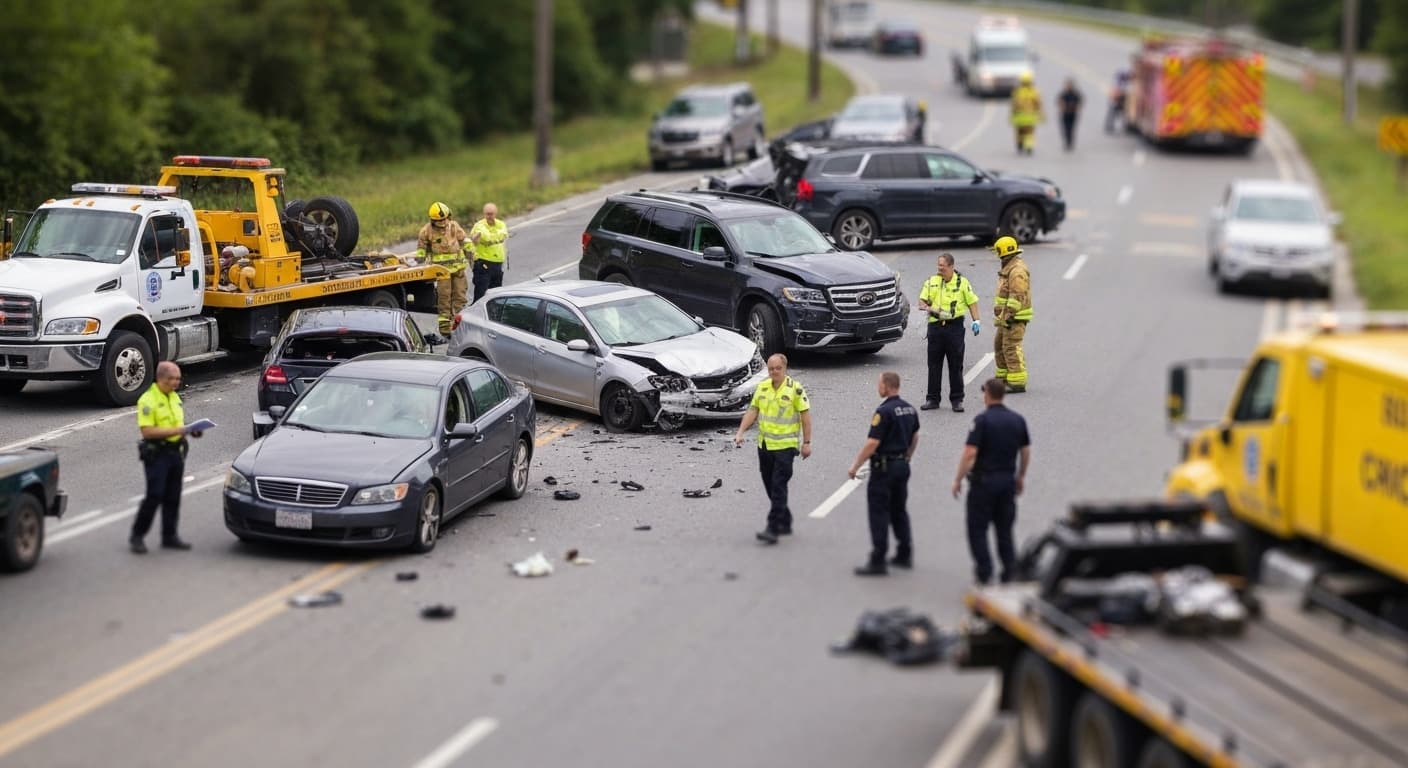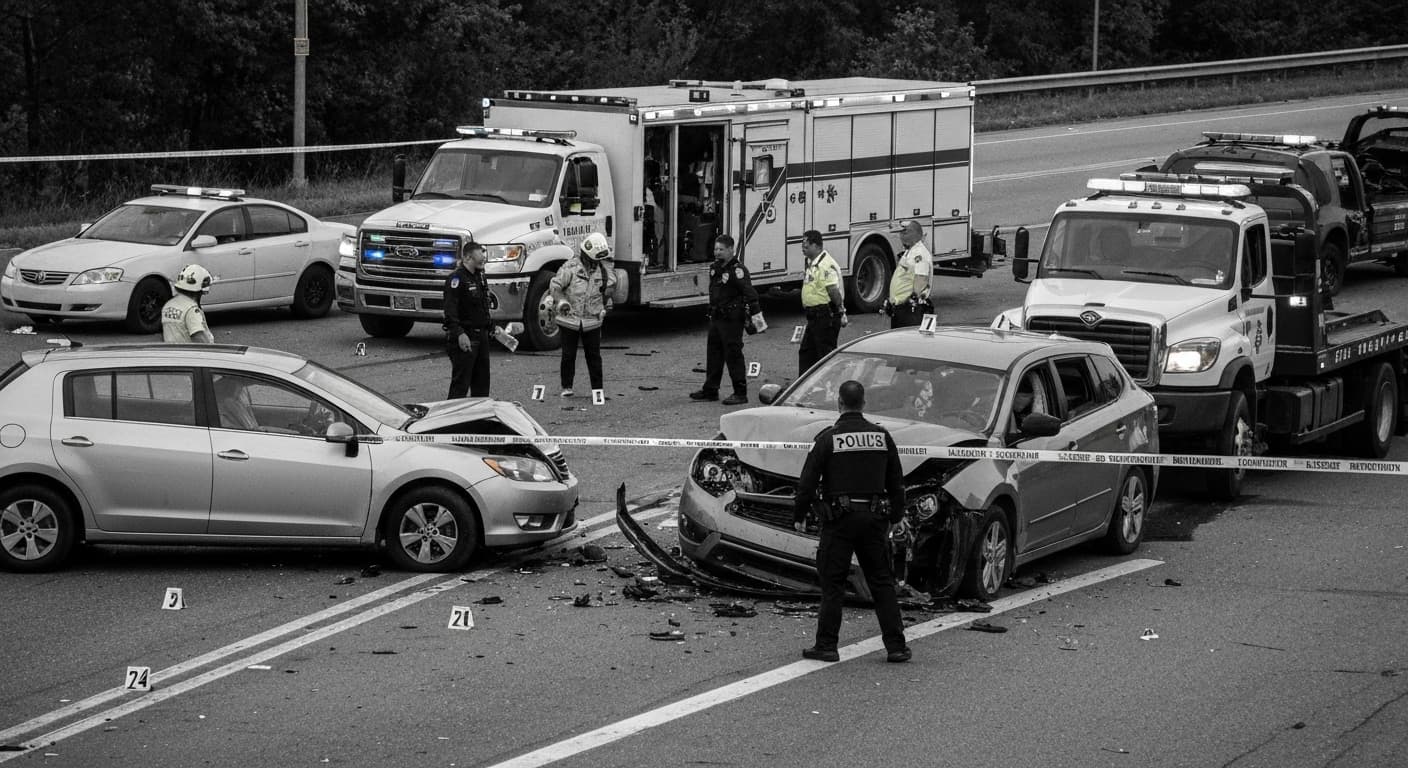
9 Reasons Why Teen Drivers Have Higher Accident Rates
Learn about 9 reasons why teen drivers have higher accident rates and how it affects your legal rights after a car accident. Get expert advice from experienced car accident attorneys.
# 9 Reasons Why Teen Drivers Have Higher Accident Rates
Teenage drivers face significantly higher accident risks compared to experienced adult drivers, with statistics showing they are involved in crashes at rates far exceeding other age groups. While teenage inexperience plays a major role, biological, developmental, and environmental factors also contribute to elevated crash risks. Understanding these factors can help parents, educators, and policymakers develop more effective strategies to improve teen driver safety. This comprehensive analysis explores the 9 primary reasons why teen drivers have higher accident rates, supported by research and statistical evidence from transportation safety organizations.
1. Lack of Driving Experience
Teen drivers typically have limited time behind the wheel, lacking the experience needed to handle complex driving situations effectively.
Experience Gap Factors:
- Limited practice hours in various driving conditions
- Unfamiliarity with vehicle handling characteristics
- Reduced ability to anticipate traffic hazards
- Limited knowledge of emergency response techniques
- Inadequate exposure to adverse weather driving
Developmental Impact:
- Decision-making skill underdevelopment in crisis situations
- Reaction time refinement still in progress
- Spatial awareness and distance judgment limitations
- Multi-tasking capability still developing
- Risk assessment accuracy reduction
2. Risk-Taking Behavior
Adolescent developmental stages often include increased risk-taking tendencies that can translate to dangerous driving behaviors.
High-Risk Driving Patterns:
- Excessive speed limit violations
- Unsafe following distance maintenance
- Improper lane change execution
- Aggressive driving behavior exhibition
- Distracted driving engagement increase
Neurological Factors:
- Prefrontal cortex development insufficiency
- Impulse control mechanism immaturity
- Reward-seeking behavior dominance
- Long-term consequence consideration reduction
- Peer influence susceptibility elevation
3. Inexperience with Hazard Recognition
Teen drivers often fail to recognize and properly respond to developing traffic hazards due to limited exposure and training.
Hazard Detection Challenges:
- Traffic signal change anticipation difficulties
- Pedestrian and cyclist presence oversight
- Railroad crossing safety negligence
- Construction zone hazard recognition failure
- Emergency vehicle response appropriateness issues
Situational Awareness Deficits:
- Peripheral vision utilization limitations
- Multiple threat assessment capabilities
- Predictive driving skill development gaps
- Environmental condition adaptation delays
- Driver error anticipation shortcomings
4. Impaired Hazard Response
Even when hazards are recognized, teen drivers often respond inappropriately or too slowly due to underdeveloped reaction capabilities.
Reaction Time Limitations:
- Neurological processing speed delays
- Motor skill coordination immaturity
- Emergency maneuver execution difficulties
- Braking technique development gaps
- Steering control precision issues
Decision-Making Challenges:
- Multiple option evaluation paralysis
- Best action selection hesitation
- Consequence prediction inaccuracies
- Alternative route consideration delays
- Help-seeking behavior inhibition
5. Peer Passenger Influence
The presence of teenage passengers often leads to increased risk-taking behavior and reduced focus on driving responsibilities.
Peer Pressure Dynamics:
- Social acceptance motivation increases
- Risk-taking behavior encouragement
- Distraction level elevation through conversation
- Competitive driving behavior induction
- Group dynamic influence amplification
Safety Impact Assessment:
- Attention diversion from driving tasks
- Decision-making compromise occurrence
- Risk tolerance threshold elevation
- Conformity pressure inducement
- Judgment impairment facilitation
6. Nighttime Driving Restrictions
Teenage drivers face increased accident risks at night due to biological factors and limited nighttime driving experience.
Biological Night Driving Challenges:
- Melatonin production timing differences
- Circadian rhythm development variations
- Visual acuity reduction in low light
- Depth perception impairment increases
- Fatigue onset acceleration
Environmental Night Factors:
- Reduced visibility condition handling
- Street lighting adequacy variations
- Traffic volume pattern differences
- Emergency situation identification difficulties
- Risk assessment capability reductions
7. Distracted Driving Engagement
Teen drivers are particularly susceptible to distraction influences that significantly impair driving performance and safety.
Common Distraction Sources:
- Cell phone usage and texting activities
- Social media platform interaction
- Music player system manipulation
- Passenger conversation engagement
- Food and beverage consumption handling
Distraction Impact Severity:
- Reaction time prolongation effects
- Situational awareness reduction
- Hazard detection capability impairment
- Decision-making process interruption
- Emergency response effectiveness decrease
8. Violation and Citation Accumulation
Teen drivers tend to accumulate more traffic violations, indicating patterns of risky driving behavior that increase accident likelihood.
Common Violation Patterns:
- Speed limit exceedance tendencies
- Traffic signal compliance failures
- Improper lane usage behaviors
- Parking regulation violations
- Seat belt usage negligence
Escalating Risk Factors:
- Point accumulation on driving records
- License suspension probability increases
- Insurance premium cost elevations
- Driving privilege restriction implementations
- Future driving opportunity limitations
9. Electronic Device Usage
Teen drivers show higher rates of engagement with electronic devices while driving, significantly increasing accident risks.
Device Usage Patterns:
- Text messaging and social media interaction
- Music streaming service manipulation
- Navigation application adjustment activities
- Gaming application engagement
- Video content consumption
Safety Impairment Mechanisms:
- Visual attention diversion duration
- Manual dexterity requirement conflicts
- Cognitive processing resource allocation
- Peripheral awareness reduction effects
- Emergency response capability diminishment
Developmental and Biological Factors
Brain Development Considerations
Adolescent Brain Characteristics:
- Prefrontal cortex maturation delay effects
- Decision-making process development gaps
- Impulse control mechanism limitations
- Risk assessment capability deficiencies
- Emotional regulation system immaturity
Neurological Processing Differences:
- Information processing speed variations
- Attention regulation mechanism limitations
- Memory consolidation process differences
- Learning pattern development variations
- Stress response system variations
Environmental and Social Influences
Parental and Family Factors
Supervision and Guidance Variations:
- Parental monitoring consistency differences
- Driving instruction quality variations
- Rule enforcement application differences
- Modeling behavior influence variations
- Support system availability differences
Socioeconomic Considerations:
- Vehicle quality and condition access variations
- Driving education opportunity differences
- Transportation necessity requirement variations
- Community safety standard differences
- Cultural attitude variation impacts
Educational and Training Factors
Driver Education Program Variations:
- Curriculum content and quality differences
- Instructor experience level variations
- Practical training hour differences
- Assessment and testing standard variations
- Follow-up support availability differences
Learning Environment Differences:
- Practice opportunity access variations
- Supervision quality and consistency differences
- Feedback mechanism effectiveness variations
- Reinforcement strategy application differences
- Motivation and engagement level variations
Statistical Evidence and Research
Accident Rate Comparisons
Age Group Risk Assessment:
- 16-year-old driver accident rate analysis
- 17-year-old driver risk evaluation
- 18-year-old driver comparison studies
- Graduated driver licensing program impact
- Supervised driving requirement effectiveness
Contributing Factor Analysis:
- Single vehicle accident percentage rates
- Multiple vehicle collision involvement
- Fatal accident rate comparisons
- Injury severity level assessments
- Weather condition influence evaluations
Prevention and Intervention Strategies
Educational Program Effectiveness
Comprehensive Driver Education:
- Classroom instruction component efficacy
- Behind-the-wheel training effectiveness
- Hazard recognition skill development
- Decision-making scenario training
- Emergency response technique practice
Advanced Training Programs:
- Simulator-based training utilization
- Risk awareness curriculum implementation
- Peer education program development
- Parent involvement initiative integration
- Long-term follow-up support establishment
Technological Safety Solutions
Vehicle Safety Feature Integration:
- Forward collision warning system implementation
- Lane-keeping assistance technology utilization
- Automatic emergency braking system adoption
- Speed control and monitoring features
- Distraction detection and alert systems
Telematics and Monitoring Programs:
- Usage-based insurance program application
- Parental control and monitoring system utilization
- Real-time feedback and coaching provision
- Safe driving behavior reinforcement
- Risk pattern identification and correction
Policy and Regulatory Approaches
Graduated Driver Licensing Programs
Licensing Stage Implementation:
- Learner permit phase requirement establishment
- Intermediate license restriction application
- Full privilege eligibility criterion definition
- Nighttime driving limitation enforcement
- Passenger restriction policy implementation
Program Effectiveness Assessment:
- Accident rate reduction measurement
- Compliance level monitoring and evaluation
- Public acceptance and support assessment
- Modification and improvement need identification
- Long-term safety impact verification
Conclusion: Multifaceted Risk Factors
Teen drivers have higher accident rates due to a complex combination of developmental, biological, and environmental factors that interact to create elevated risk conditions. The 9 reasons outlined in this analysis highlight the importance of comprehensive approaches to teen driver safety that address inexperience, risk-taking tendencies, and environmental influences through education, training, technology, and supportive policy measures.
Effective teen driver safety programs require coordinated efforts from parents, educators, policymakers, and communities to create safer driving environments and develop the skills needed for responsible vehicle operation. With appropriate interventions and support, many of the risk factors associated with teen driving can be significantly mitigated.
Understanding these factors helps inform targeted interventions and safety programs designed to reduce teen accident rates and improve overall road safety. Continued research and evaluation of prevention strategies are essential for developing evidence-based approaches to teen driver safety enhancement.
Parents and guardians should work closely with teen drivers to implement graduated driving experiences, enforce safe driving practices, and provide ongoing guidance and support. Professional driving instructors and defensive driving courses can also play important roles in developing the skills and habits needed for safe driving practices.


